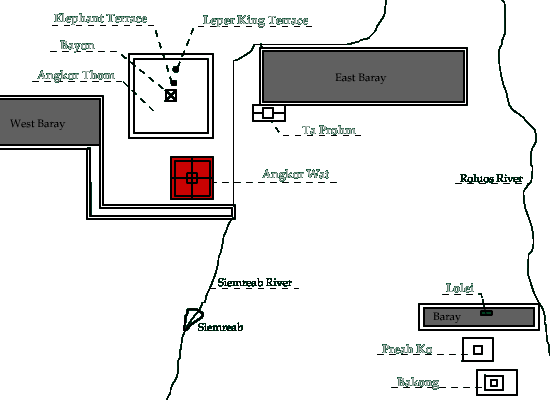|
Consecrated around 1150, its construction lasted until the death of Suryavarman II. This artistically enthralling building is the best known temple of the golden age, and it is the world’s largest sacral building complex. Spread over an area of nearly two square kilometers, the ornamented galleries, covered and open stairways, water basins, crests and colonnades are almost entirely covered with refined carvings. The rectangular westbound inner court is separated from the outer world by two U-shaped inverted basins nearly two hundred meters wide. From the western main entrance, where the two basins meet, is a column-ornamented embankment-bridge, while from the eastern side an embankment road leads into the inner court surrounded by huge walls. The basins symbolize the ocean, which is a recurring motif in Hindu mythology, in which an island, the holy mountain of Mehru, hosts divine dwellings facing towards the five cardinal points. (The Hindus have five cardinal points, as the “middle” is an individual cardinal point for them.) The divine dwellings and palaces are symbolized by towers, in the form of a regular quadrangle, located on the top floor of the Angkor Wat temple-pyramid. Due to the fact that the roofs, also made of carved stone, are built exactly behind and above one another, the visitor approaching the temple sees the building as a huge palace-mountain. In reality, the mainly traversable towers and halls built at the meeting points of terraces and galleries encircle an area not larger than a few square meters. On the ground floor of the main temple-pyramid, there is a 1,200-meter long, nearly four-meter high series of reliefs carved and scratched only a few millimeters deep into the walls. The series is divided into eight parts, with each part featuring a different historical or mythological sequence. From the free wall surfaces nearly 2000 concubines—each dressed, bejeweled and coiffed differently—smile at the visitor. |
 |